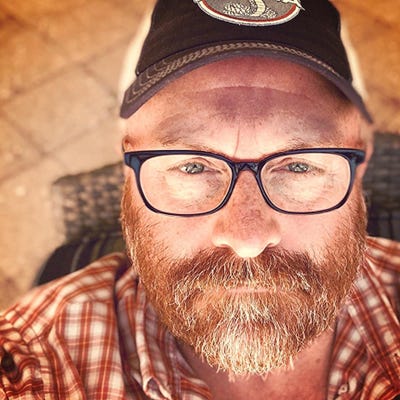What will it take to clean up this mess? Knowing the scope of the challenge, improving recycling infrastructure, educating the players, and forward thinking will make a dent.
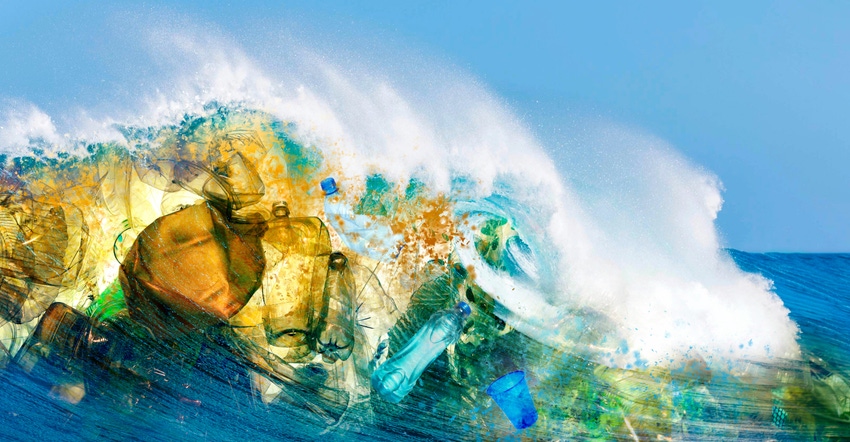
Kids are visual — and keyed in to change. So, when a friend’s 10-year-old, Everleigh, engaged me in a conversation about what plastics were doing to the oceans, I gave her my full attention. “Let me show you,” she said.
She pulled up a Tik-tok video, and I watched as a massive crane dumped thousands upon thousands of large plastic containers and other debris onto the deck of a ship. Part of the notorious Great Pacific Garbage Patch, this junk had been successfully scooped up from the sea. Everleigh’s excitement over the progress this video shares is why we see so many leading brands pledge to help rid the planet of waste. She is their future customer. Or maybe not.
Here’s what we know:
• 92% of the Great Pacific Garbage Patch (GPGP) is comprised of large-sized debris, containing nearly 1.8 trillion pieces of plastic.
• 8% of the GPGP is comprised of single-use plastic packaging, but a larger percentage is tossed into rivers where debris flows downstream, breaks apart. and end up on the ocean floor.
• Compounding this problem, large debris eventually breaks down to pieces no larger than a centimeter, called “microplastics.”
• Over time, microplastics sink to the ocean floor where they are impossible to remove; they are mistaken for food by marine life.
• Discarded fishing nets — also known as ghost nets — along with other fishing industry debris, account for 46% of the GPGP’s mass. Marine life often gets caught in the nets.
Reality Check #1:
According to the National Geographic Society, as of 2018, it would take 67 ships operating every day for one year to rid the GPGP of just 1% of the debris.
Can it be cleaned up?
Although the outlook seems bleak, there are advances under way that leverage science and technology to clean up the GPGP. The Ocean Clean Up project announced in October of 2021 that its experimental clean-up fleet had successfully cleared more than 63,000 pounds of plastic debris in a single haul. Based on these findings, the organization is increasing its fleet and is greatly optimistic it’ll reduce up to 50% of the patch every five years, with the end goal of removing the great patch altogether by 2040. It’s worth noting that these projections include debris that is continuously being added to the patch.
Reality check #2:
According to Covestro, a global supplier of high-tech polymer materials, “Infrastructure systems designed to manage and collect waste have struggled to keep up with the dramatic rise of single-use plastics in circulation, and as a result, plastic pollution has increased rapidly in recent years, especially in developing countries.”
Why add to the patch in the first place?
It’s long been my belief as a packaging designer that the problem is not only the patch itself, but the process that created it. In other words, we have a responsibility to accelerate packaging innovation to avoid adding fuel to the fire that is the patch. We need smarter ways to design reusable and biodegradable packaging and become true players in the circular economy.
Remember, the next generation is watching.
Kids are not only seeing the tortoise in distress with the straw in its nose; they are also learning about the perils of plastic in school. Brands that take this seriously will not only make good on their pledges, but fuel their appeal to the next generation and outperform lagging competitors. So, who’s getting it right?
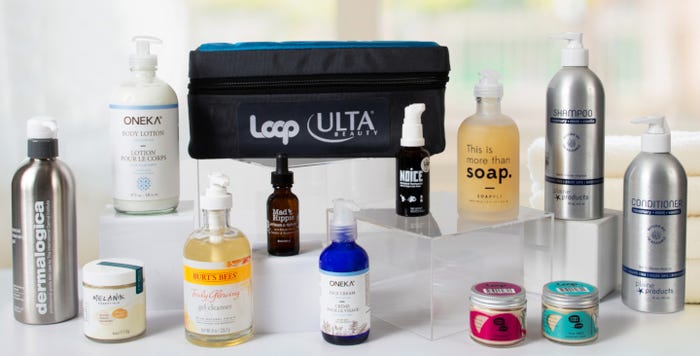
Closing the Loop.
Loop is a subscription service for food and household goods, launched by TerraCycle. The Loop services are offered through major chains such as Walgreens and Kroger. Currently testing their concept nationally, the service provides people with products in reusable packaging, such as shampoo bottles and ice cream containers. Once empty, packaging is picked up, refilled, and reused. Loop has also partnered with Ulta Beauty, a national personal care brand, to offer its portfolio of sustainable products. As befits its name, Loop is a prime example of the emerging circular economy.
Companies are reinventing reusable.
Just take a look at what Häagen-Dazs is offering through Loop. As part of a reusable delivery strategy, the brand created an attractive stainless-steel canister. The design is ideal for a premium brand. The containers provide a new canvas for packaging ingenuity.
Reminiscent of old-school metal lunch canisters, images and graphics jump off the silver background. With such a substantial upgrade, Häagen-Dazs stands out from other premium ice creams, essential in a competitive category.
Thanks to this packaging, the ice cream is even more fun and delicious to eat. The double-walled container allows the ice cream to melt more quickly at the top than at the bottom. This way, people enjoy a balanced level of density. The ice cream maintains its consistency even when you reach the bottom. The container also protects the product throughout transport. This is more than just sustainable packaging; it’s packaging that elevates the consumer experience.
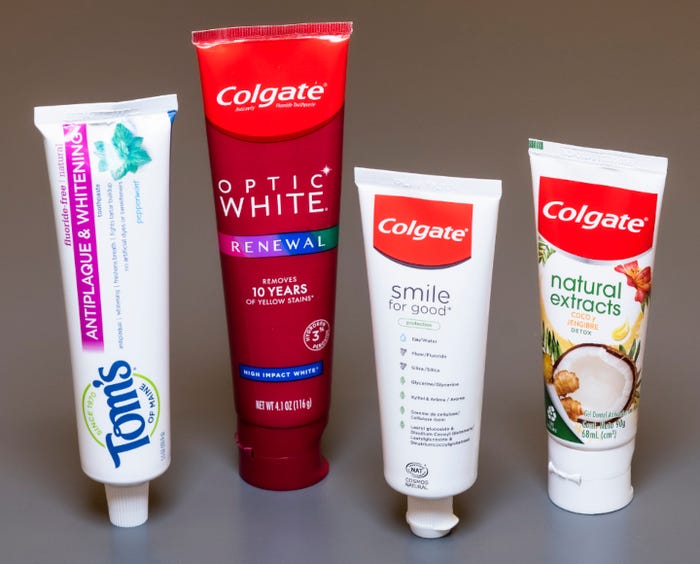
It’s on record, more than a billion toothpaste tubes in the US alone end up in landfills. No doubt many go to the oceans. One reason for this is that the packaging is manufactured with multiple layers making it ineligible for recycling. Colgate-Palmolive spent five years developing a new recyclable tube made of high-density polyethylene (HDPE), the same plastic that is used for milk jugs, with the promise of compatibility with our current recycling infrastructure. This is no doubt a breakthrough for the category.
Reality Check #3:
While this is a great concept, we know a large portion of recyclable packaging still goes to waste. That’s because our recycling industry (the people who pick up/sort our trash) urgently needs an overhaul. How does the recycling facility know the difference between this tube and every other?
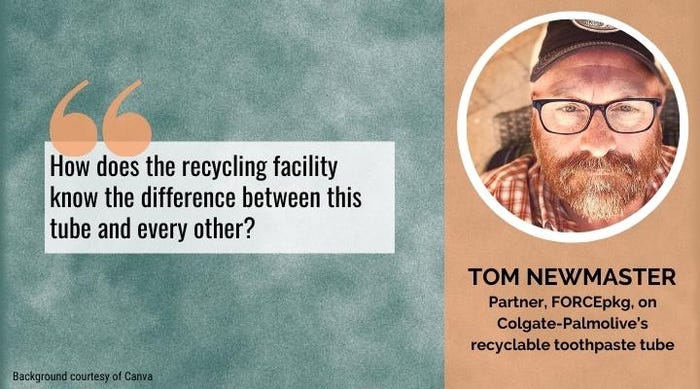
Sugarcane — how sweet it is.
Sugarcane usage as a packaging material is blowing up right now. It possesses the trifecta of ethical packaging benefits: it’s renewable, biodegradable, and compostable. In fact, anything made from sugarcane will degrade within 60 to 90 days. We’re seeing it everywhere: coffee cups, utensils, single-use plates, to-go boxes, bags, lids, pizza boxes, straws, and tons more. Companies like Good Start Packaging — a leading source of sugarcane packaging — are also a real threat to expanded polystyrene foam (EPS). Here’s a material that takes 500 years to degrade and consumes 30% of the space in every landfill. If it goes to the ocean, EPS inevitably breaks down into microplastic. And we all know what that does to marine life.
A parting word from Everleigh.
I mentioned my friend’s daughter Everleigh who, at 10, is passionate about preserving our oceans. So, what can we do to assure her generation they’re being heard? We can start by taking accountability for the role our industries play in addressing the problems. I’ve talked about some of the innovations and new materials that packagers are bringing to the table. I’ve also shared what activists are doing to clean up the GPGP. But here’s the final reality check.
Reality check #4:
We can fix the mistakes of past generations, but it takes more forward thinking to make our efforts toward sustainability “sustainable.”
Four questions we need to ask ourselves to really bring about change:
1. How can we improve the recycling infrastructure so that the degradable toothpaste tube goes to the right place? According to Unilever, “It’s technically possible to recycle about 70% of our product portfolio. However, what is actually recycled is lower because of the lack of infrastructure of communities.”
2. How we ensure that new materials, whether sugarcane or innovative plastics, get sorted correctly and not end up in the ocean?
3. How do we advance the use of products that truly fit the circular economy, such as reusables, compostables, and post-consumer recycled plastics (PCR)?
4. How do we partner with our clients to create packaging that would delight Everleigh’s generation? This starts with avoiding new plastics; instead using only recycled options.
As a packaging designer, I realize this isn’t a small ask, but a necessary one, considering the power each generation has on the way we live our lives, conduct business, and confront change.
If we want to create a loyal customer base, we need to accept that the “wonder material” known as plastic needs to adapt well to our new circular economy.
About the Author(s)
You May Also Like

